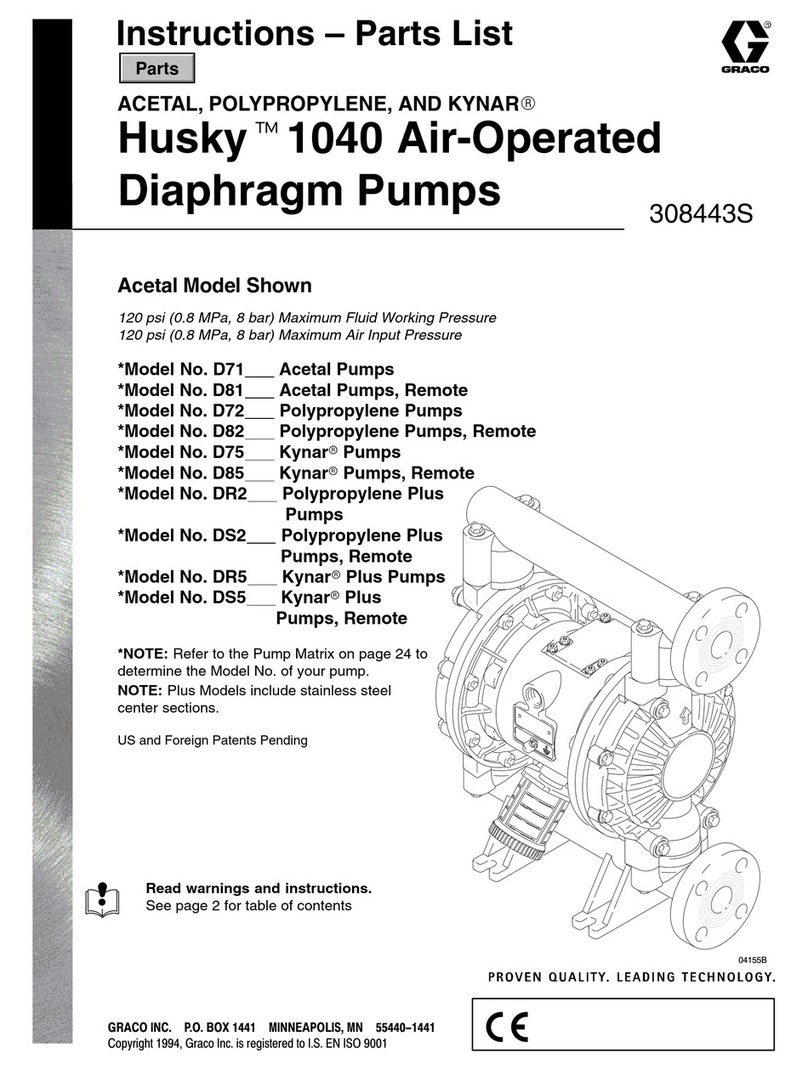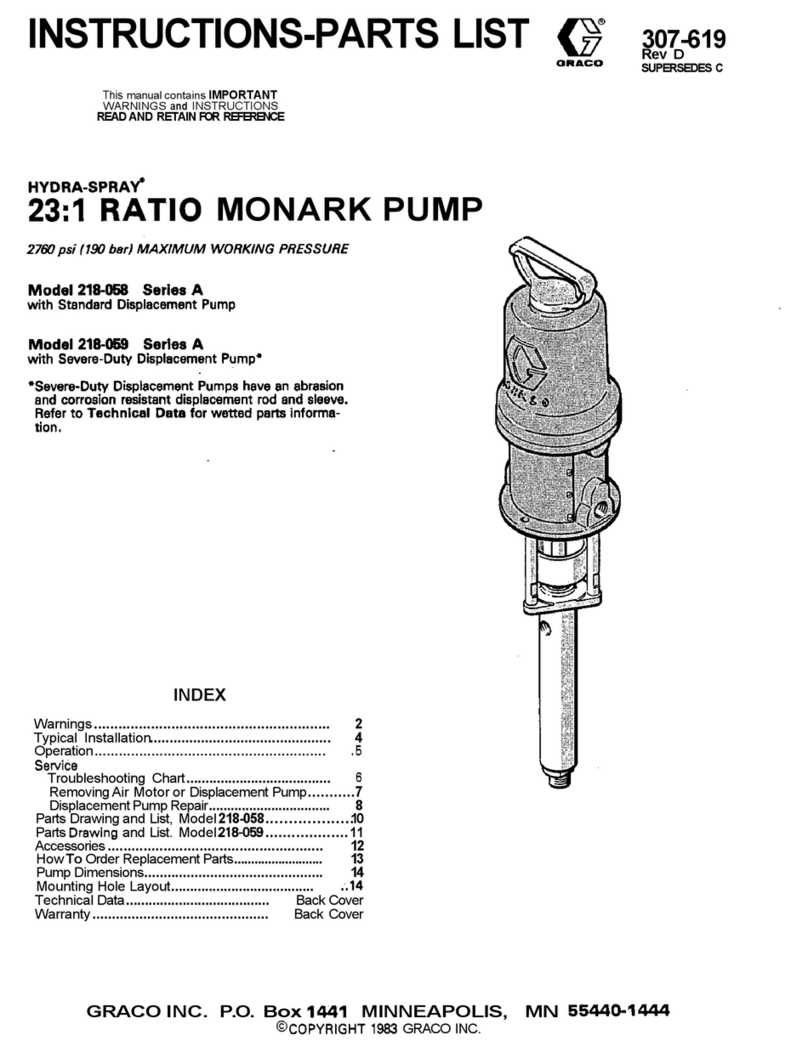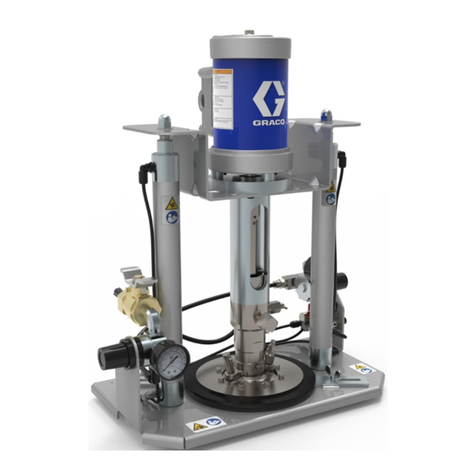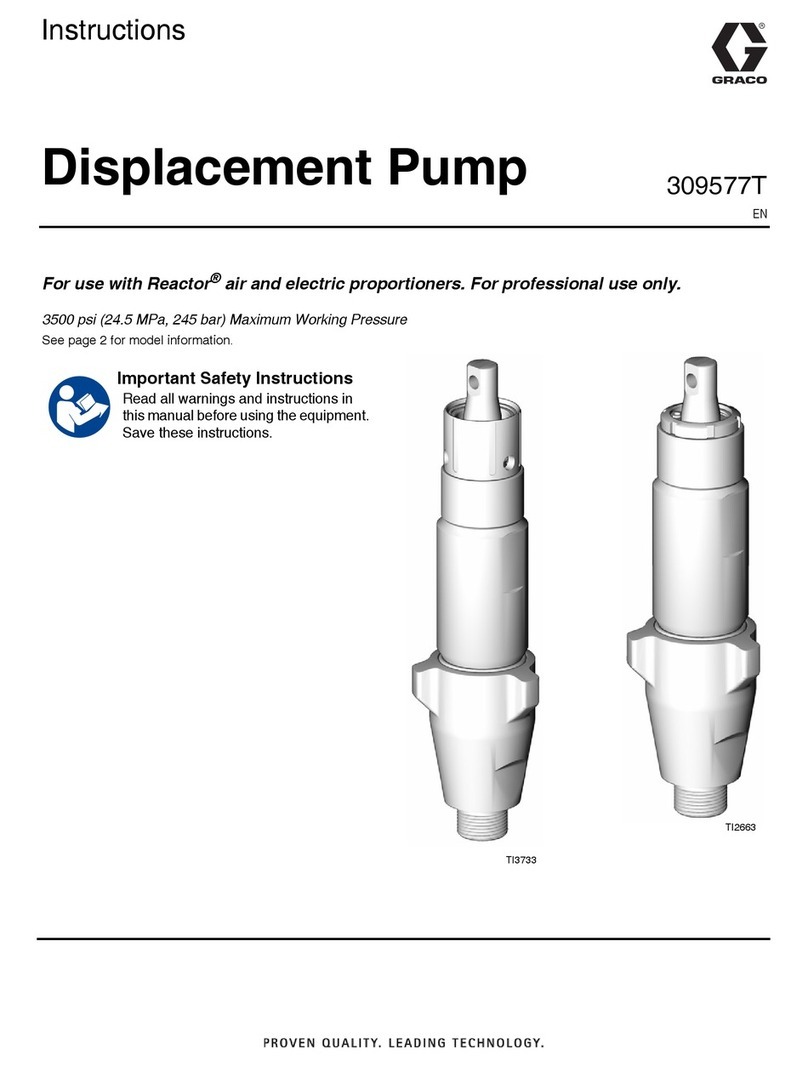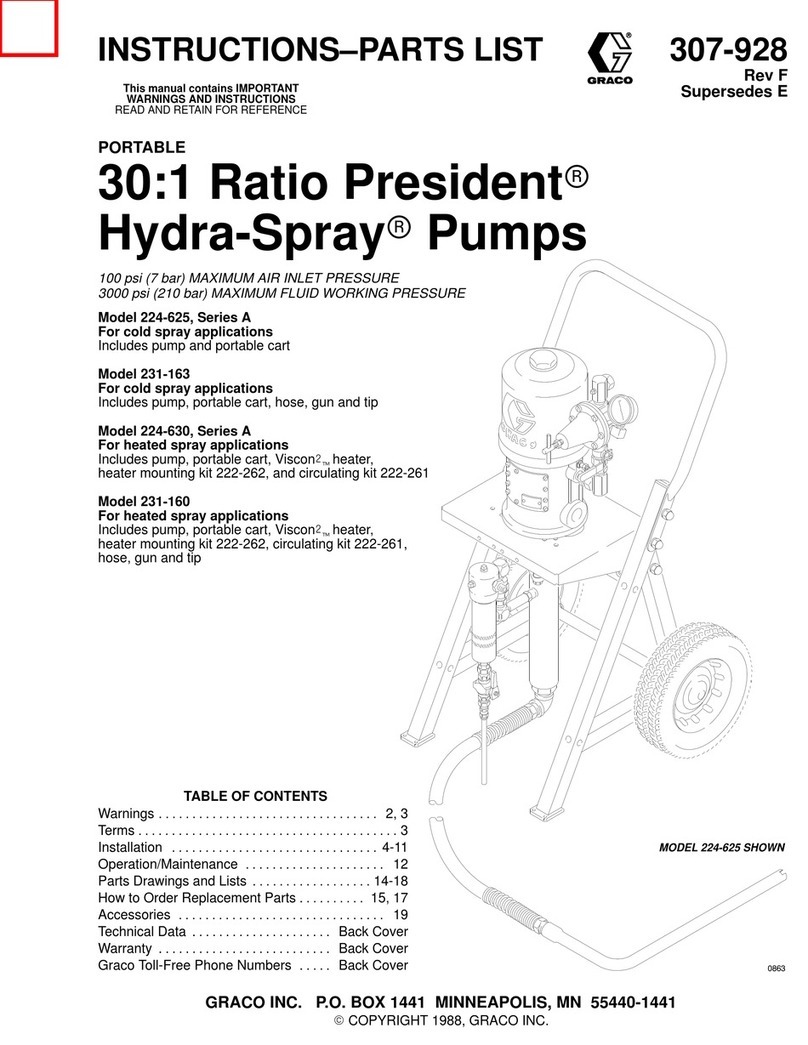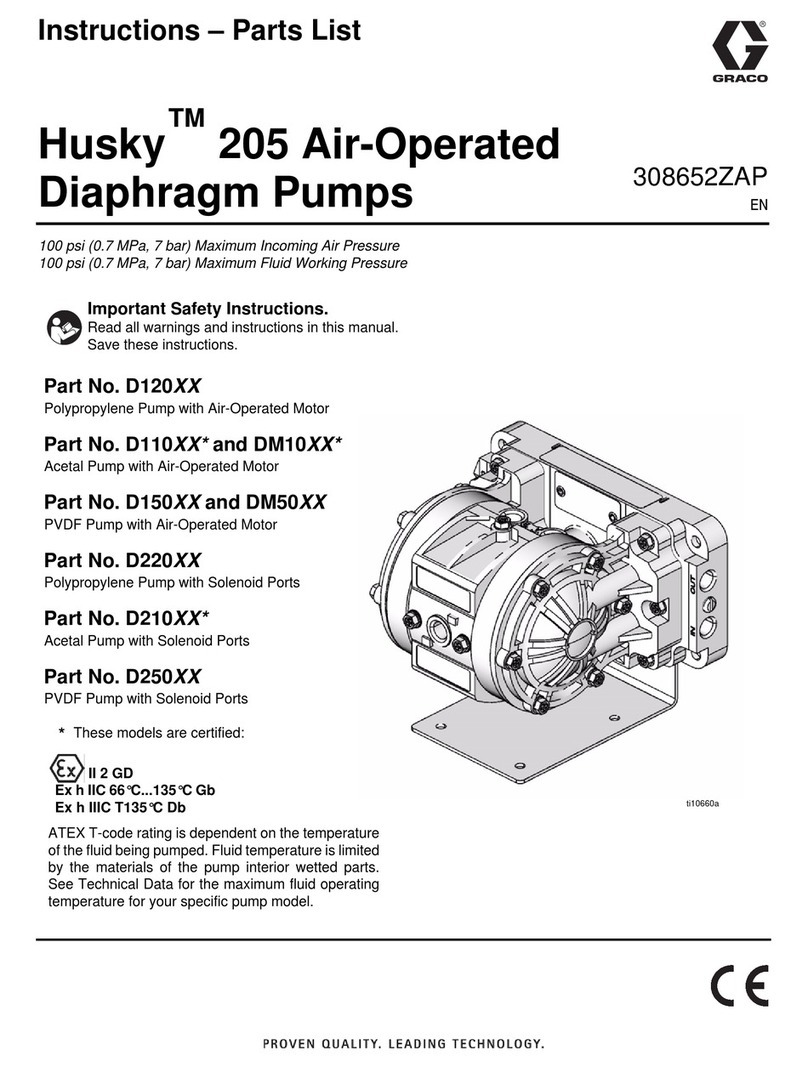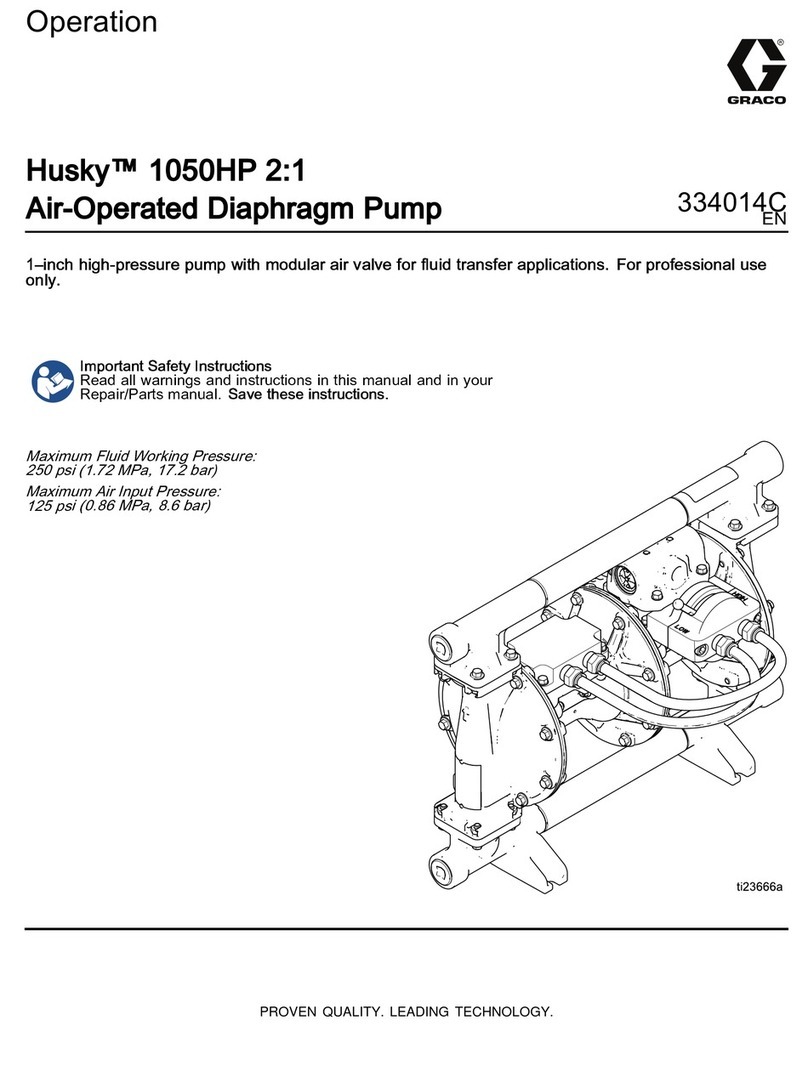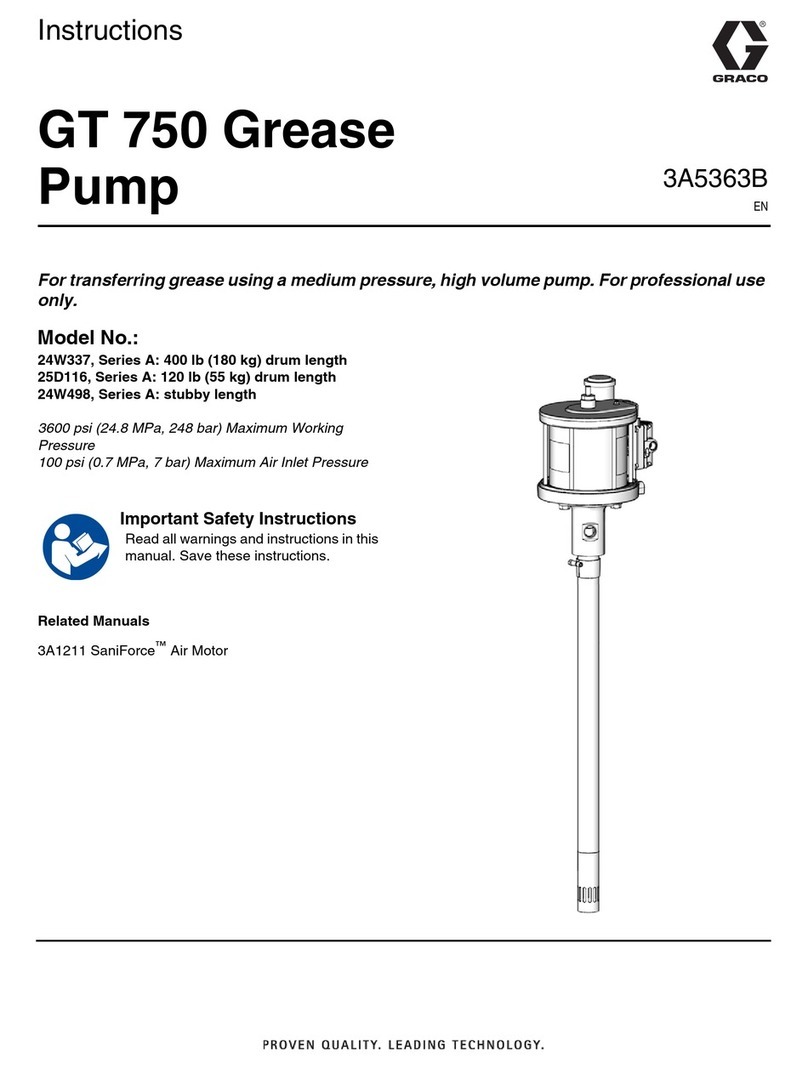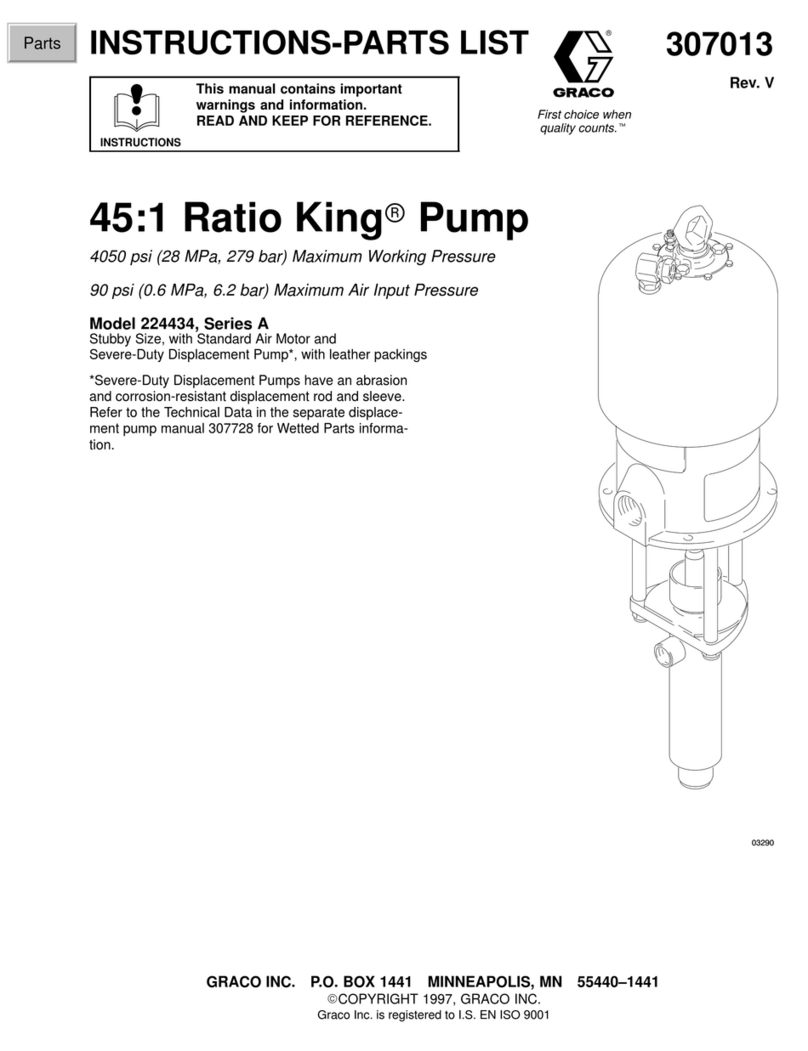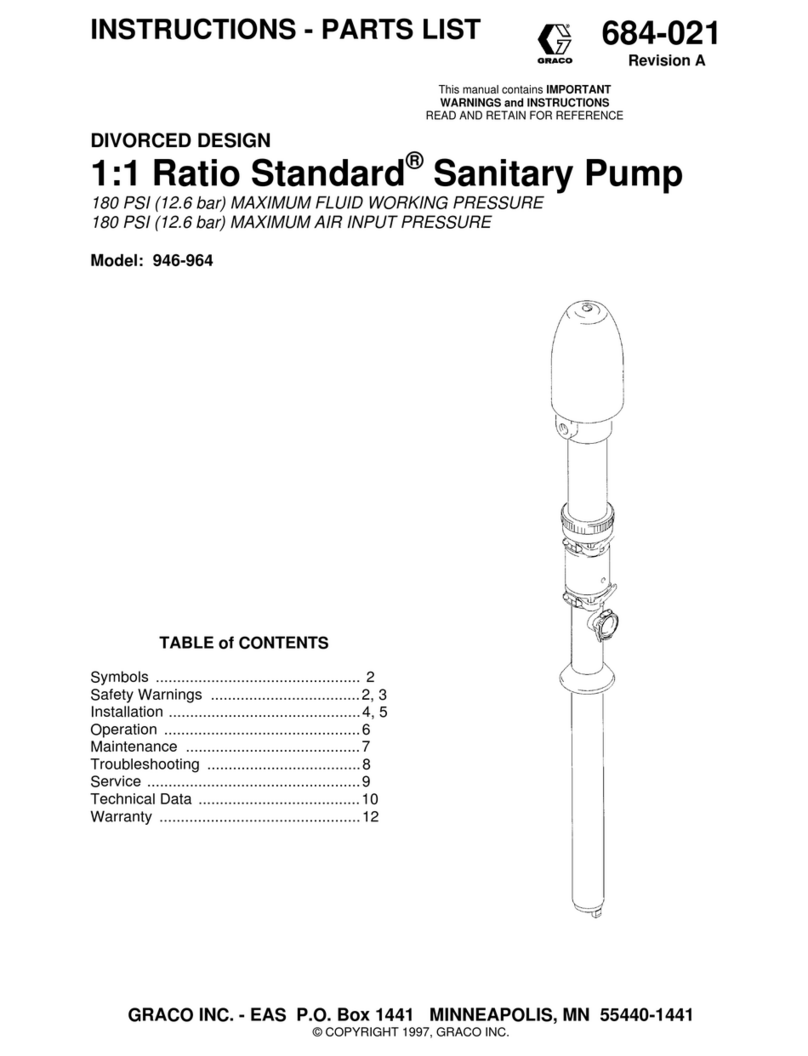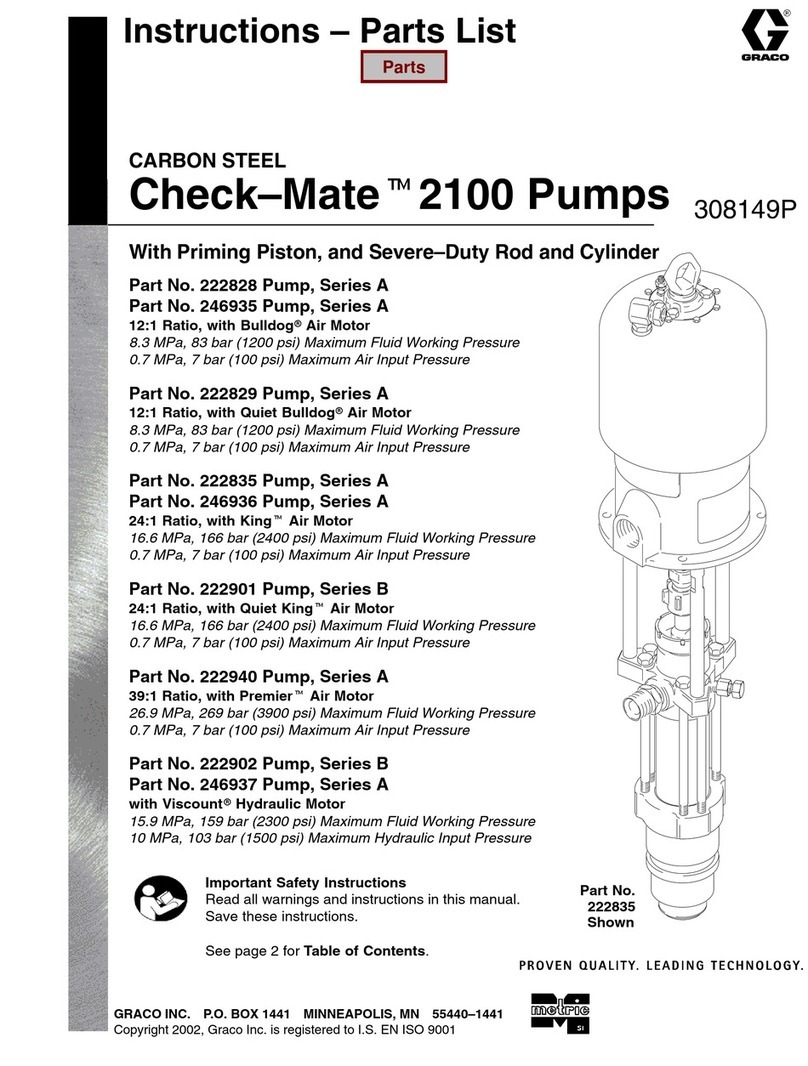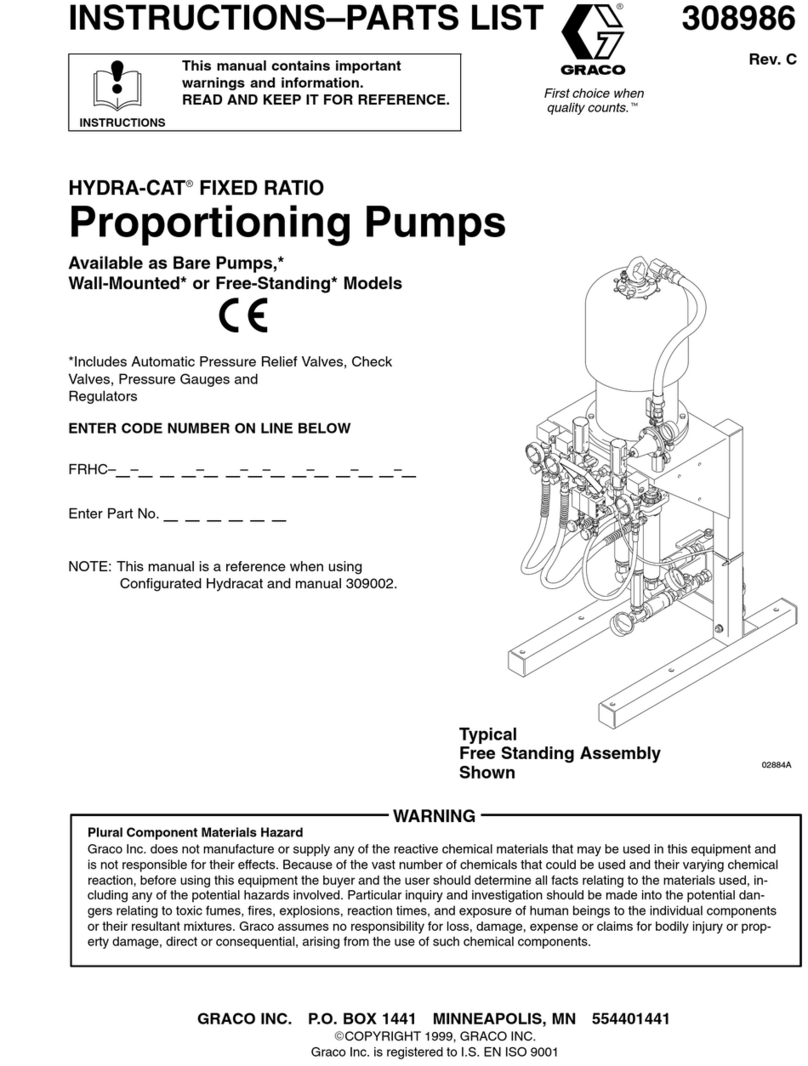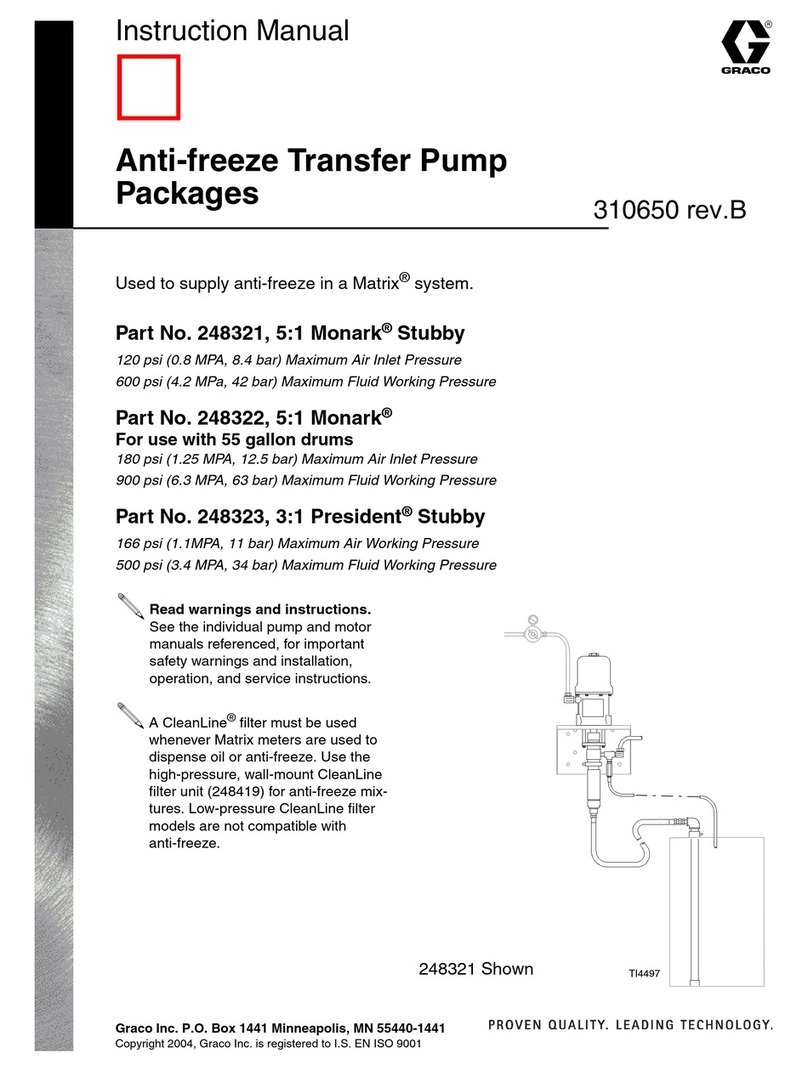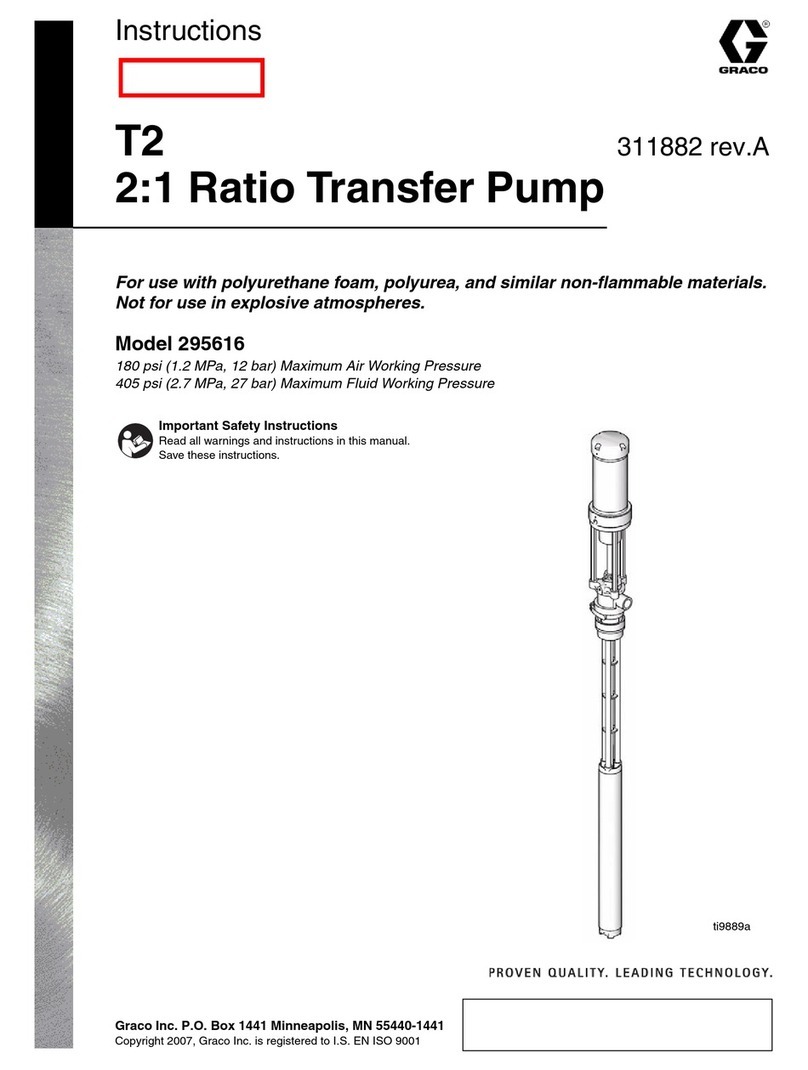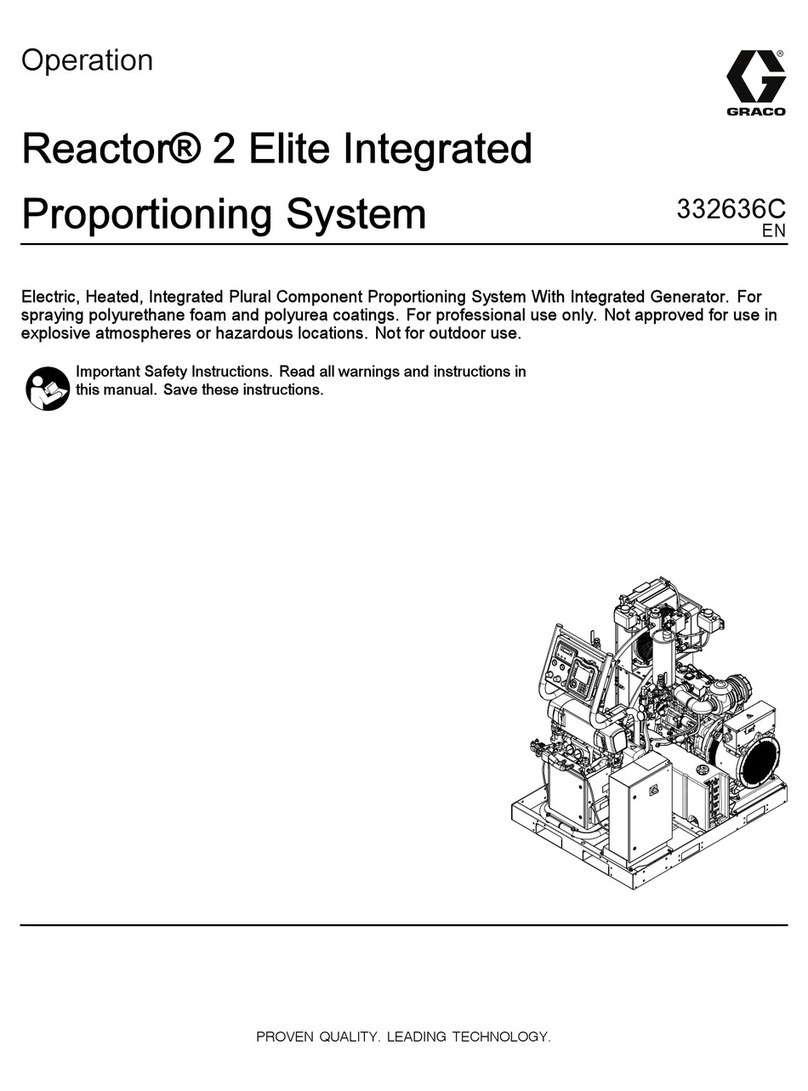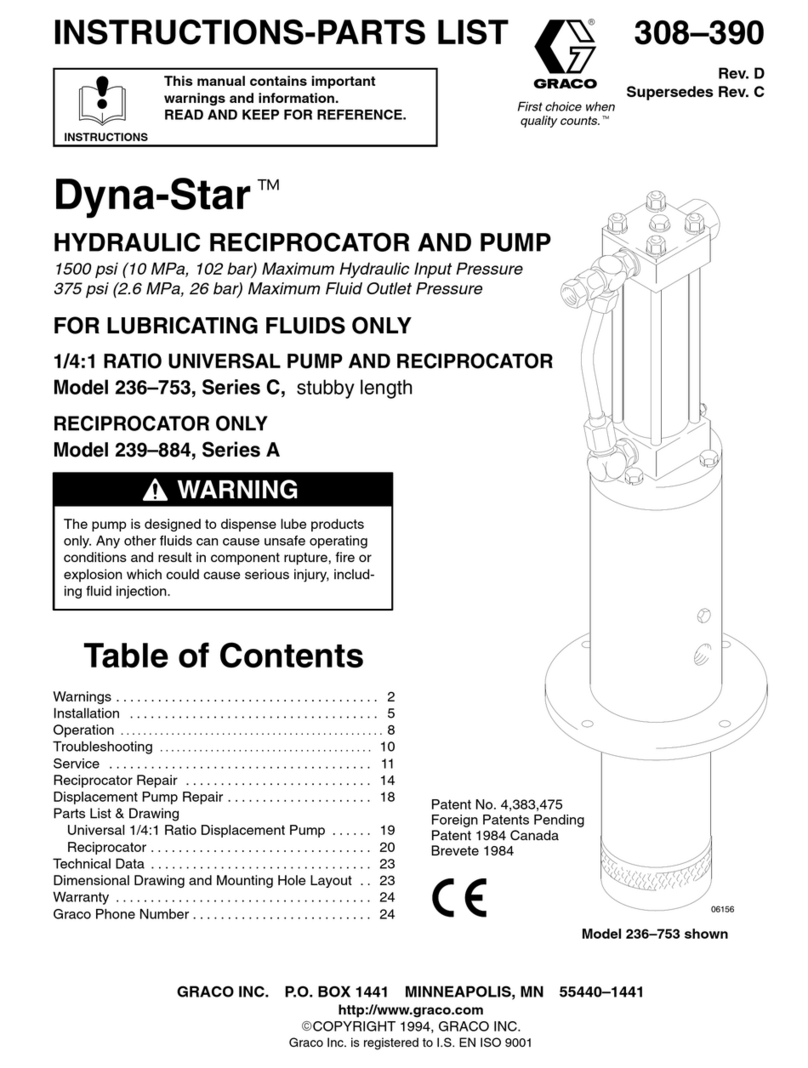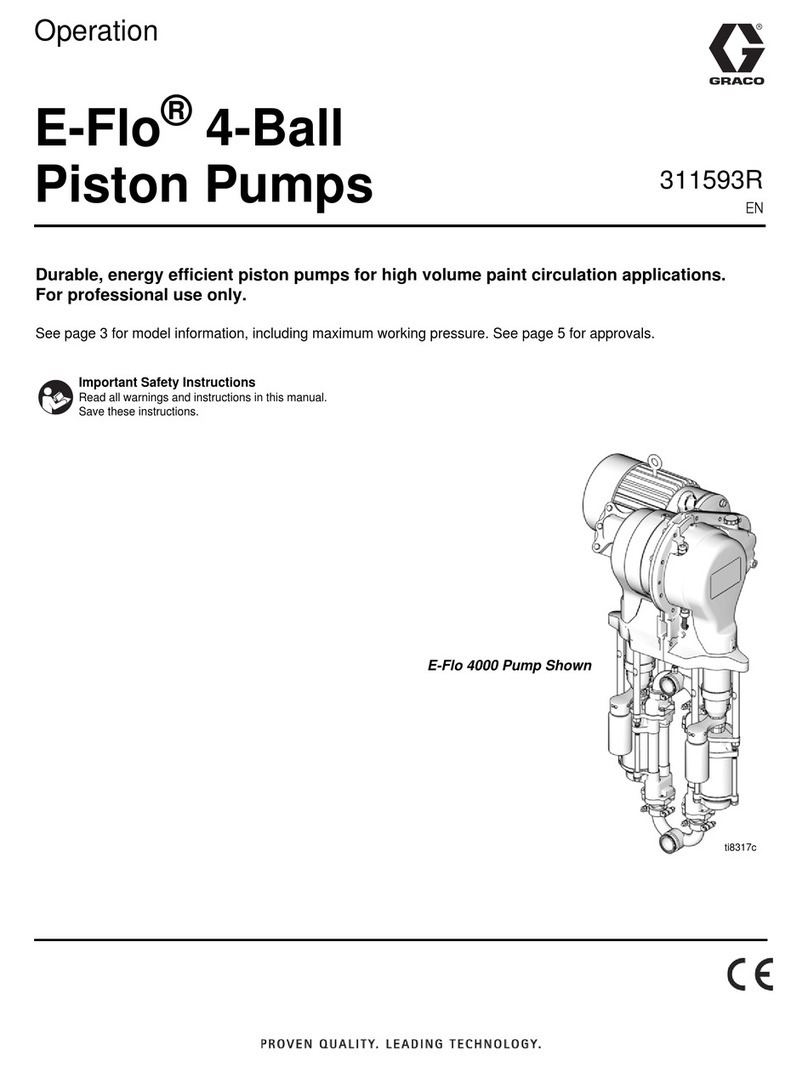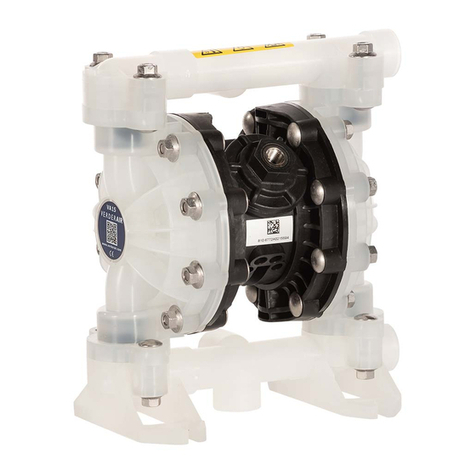
8308-151
OPERATION/MAINTENANCE
Pressure Relief Procedure
T
o reduce the risk of serious bodily injury
, including
fluid
injection, splashing in the eyes or on the skin, or
injury from moving parts, always follow this proce-
dure
whenever you shut of
f the pump, when check
-
ing
or servicing any
part of the spray/dispensing sys
-
tem, when installing, cleaning or changing spray
tips/nozzles, and whenever you stop spraying/dis-
pensing.
1. Engage the spray gun/dispensing valve safety
latch.
2. Shut
off the air or hydraulic supply to the pump.
3. In air–powered systems, close the bleed–type
master air valve (required in your system). In
hydraulic–powered
systems, close the hydraulic
supply
line valve
first
, then the return line valve.
4.
Disengage the gun/valve safety latch.
5. Hold a metal part of the gun/valve firmly to the
side
of a grounded metal pail, and trigger the gun/
valve
to relieve pressure.
6.
Engage the gun/valve safety latch.
7. Open the drain valve (required in your system)
and/or the pump bleeder valve, having a con-
tainer
ready to catch the drainage.
8. Leave
the drain valve open until you are ready
to
spray/dispense
again.
If you suspect that the spray tip/nozzle or hose is
completely clogged, or that pressure has not been
fully
relieved after following the
steps above,
VER
Y
SLOWLY
loosen the tip guard retaining nut, nozzle,
or
hose end coupling and relieve pressure gradually
,
then
loosen completely
. Now clear the tip/nozzle or
hose.
WARNING
P
ACKING NUT/WET–CUP (ALL MODELS)
Fill
the packing nut/wet–cup (3) 1/3 full with Graco Throat
Seal
Liquid (TSL) or compatible solvent. See Fig. 2. Us
-
ing the supplied wrench (104), adjust the packing nut
weekly so it is just snug; do not overtighten. Follow the
Pressure
Relief
Procedure W
arning
above before ad
-
justing
the packing nut.
FLUSHING THE PUMP (ALL MODELS)
The
pump is tested with lightweight oil, which is left in to
protect the pump parts. If the fluid you are using may be
contaminated
by the oil, flush it out with a compatible sol
-
vent
before using the pump.
For your safety , read the warning section, FIRE
OR
EXPLOSION HAZARD
on page 3 before flush
-
ing,
and follow all the recommendations given
there.
WARNING
OPERATION
(AIR–POWERED MODELS)
Starting and Adjusting the Pump
Refer
to the
TYPICAL
INST
ALLATION
on page 4. Con
-
nect
the suction kit (T) to the pump’
s fluid inlet, and place
the
tube into the fluid supply
.
Be sure the air regulator (F) is closed. Then open the
pump’s
bleed–type master air valve (E). Hold a metal part
of
the spray gun/dispensing valve (S) firmly to the side
of
a grounded metal pail and hold the trigger open. Now
slowly
open the air regulator until the pump starts.
Cycle
the pump slowly until all the air is pushed out
and
the
pump and hoses are fully primed. Release the spray
gun/dispensing
valve trigger and engage the safety
latch.
The
pump should stall against pressure when the
trigger
is
released.
If
the pump fails to prime properly
, open the bleeder valve
(24)
slightly
. Use the bleed hole, on the underside of the
valve, as a priming valve until the fluid appears at the
hole.
See Fig 2. Close the bleeder valve.
NOTE: When changing fluid containers with the hose
and
gun already
primed, open the bleeder valve
(24),
to assist in priming the pump and venting air
before it enters the hose. Close the bleeder valve
when
all air has been eliminated.
To reduce the risk of fluid injection, DO NOT use
your hand or fingers to cover the bleed hole when
priming
the pump.
WARNING
With the pump and lines primed, and with adequate air
pressure and volume supplied, the pump will start and
stop
as the gun/valve is opened and closed. In a
circulat
-
ing
system, the pump will speed up or slow down on de
-
mand,
until the air supply is shut of
f.
Use the
air regulator to control the pump speed and the
fluid
pressure. Always use the lowest
air pressure neces
-
sary to get the desired results. Higher pressures cause
premature
tip/nozzle and pump wear
.
To
reduce the risk of overpressurizing your system,
which could result in component rupture and cause
serious bodily injury,
NEVER exceed the specified
MAXIMUM INCOMING AIR PRESSURE to the
pump
(see the T
echnical Data on pages 24–27).
WARNING
Never allow the pump to run dry of the fluid being
pumped. A dry pump will quickly accelerate to a high
speed,
possibly damaging itself. A pump runaway valve
(C),
which shuts of
f the air supply to the pump if the pump
accelerates
beyond the
pre–set speed, is available. See
the Typical Installation on page 4 and ACCESSORIES
on page 22. If your pump accelerates quickly, or is run-
ning
too fast, stop it immediately and check the fluid
sup
-
ply. If the supply container is empty and air has been
pumped into the lines, refill the container and prime the
pump and the lines with fluid, or flush and leave it filled
with
a compatible solvent. Be sure to eliminate all air from
the
fluid system.
Shutdown and Care of the Pump
For
overnight shutdown, follow the
Pressure Relief Pro
-
cedure
W
arning
at left. Stop the pump at the bottom of
the
stroke to prevent fluid from drying on the exposed
dis
-
placement
rod and damaging the throat packings.
Always flush the pump before the fluid dries on the dis-
placement
rod. Never leave water or water–based fluid in
the pump overnight. First, flush with water or a compat-
ible solvent, then with mineral spirits. Relieve the pres-
sure,
but leave the
mineral spirits in the pump to protect
the
parts from corrosion.
